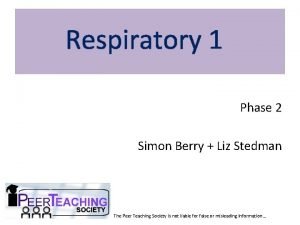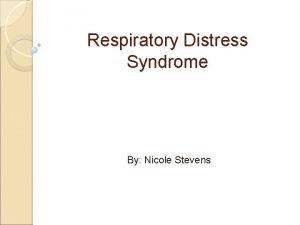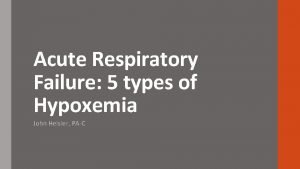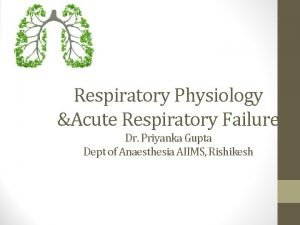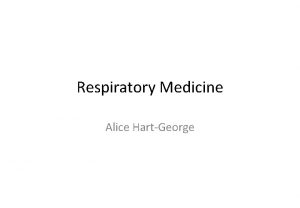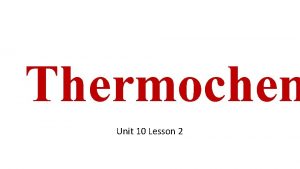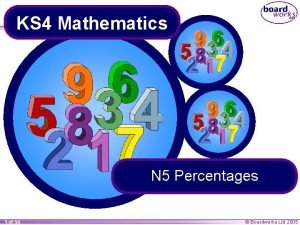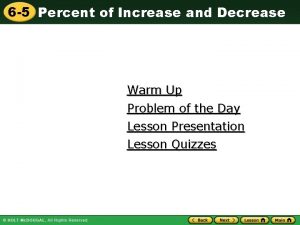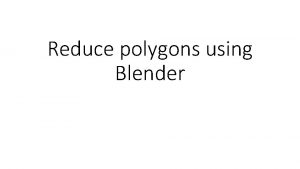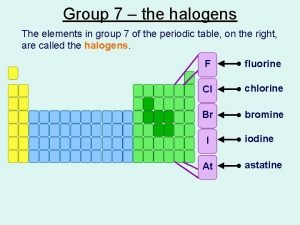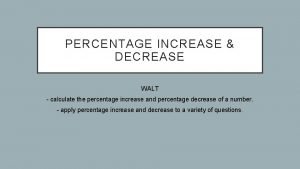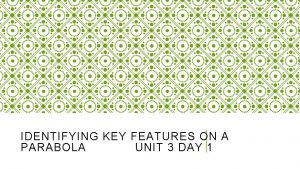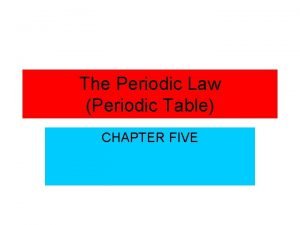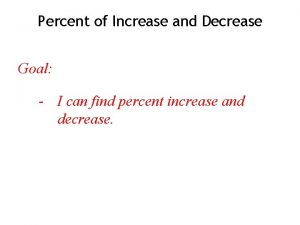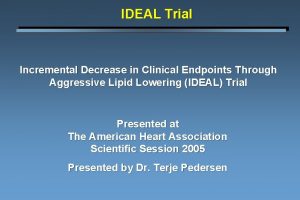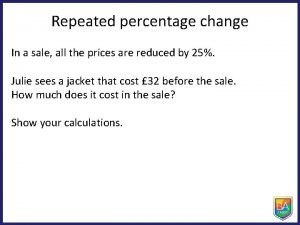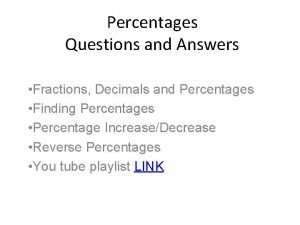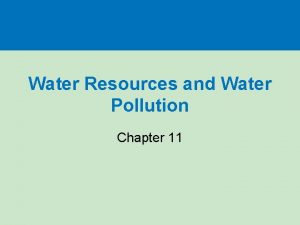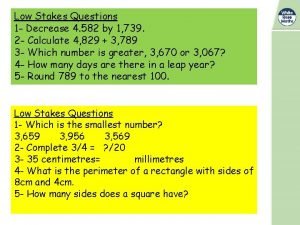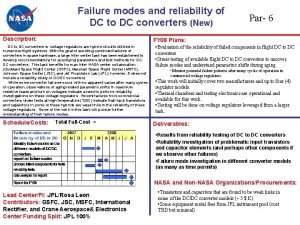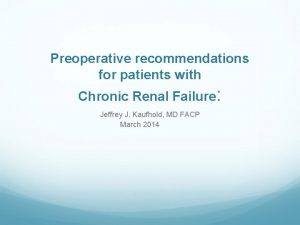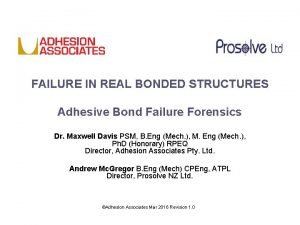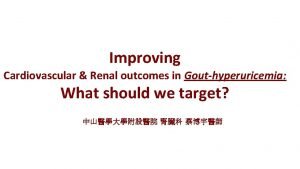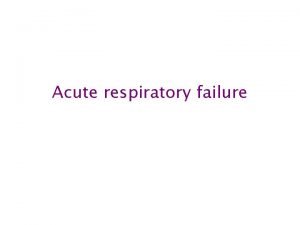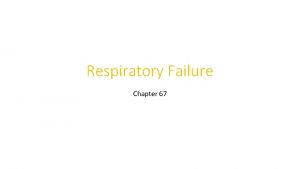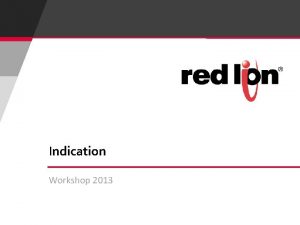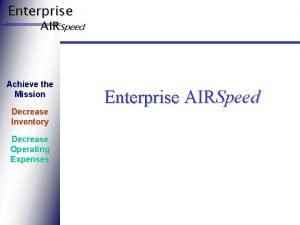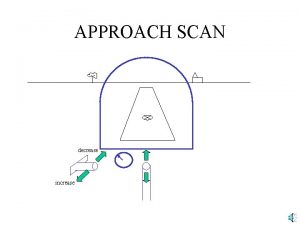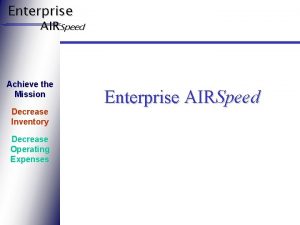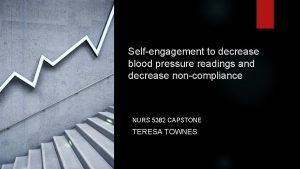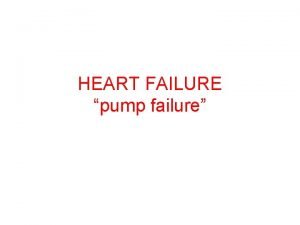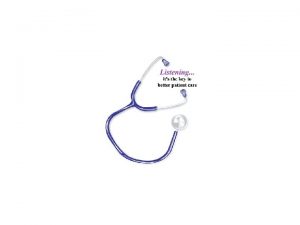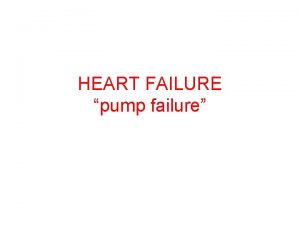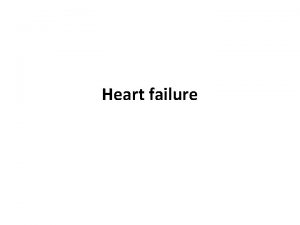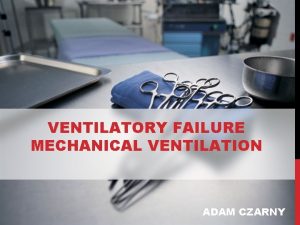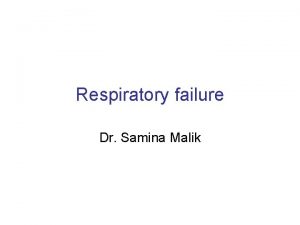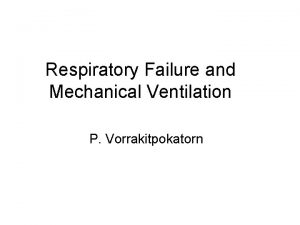Indication Indication Respiratory failure n To decrease or














































- Slides: 46







Indication

Indication Respiratory failure n To decrease or support work of breathing n To improve oxygenation n To recruit the lung n To support other organs e. g. : increased ICP, CHF n

Normal value Tidal volume 10 -12 ml/kg in general or 6 -8 ml/kg in ARDS n MV 200 -300 ml /kg n

Parts and Humidifiers






How to set in some situations post-operative n asthma or BPD n pneumonia or ARDS n increased ICP n





Example 1 - post operative Mode: Pressure controlled ventilation PIP 20 cm H 2 O PEEP 5 cm H 2 O Fi. O 2 0. 5 i Time 1. 0 sec Rate 20 / min

Example 2 - asthma Mode: Time cycled pressure limited Flow 3 times minute ventilation (Normal MV = 200 -300 ml/kg) PIP 20 cm H 2 O PEEP 3 cm H 2 O Fi. O 2 0. 5 i Time 0. 6 sec Rate 20 / min



Alarms

Alarms Usually will set 15% more or less n MV 200 -300 ml /kg n Tidal volume 10 -12 ml/kg in general or 6 -8 ml/kg in ARDS n

Alarms n Pressure alarm for SIMV or volume mode n Expired TV alarm and MV alarm for Pressure mode n Apnea alarm or high RR alarm

Noninvasive mechanical ventiation


High frequency mechanical ventilation



Indication. 1 To serve as a ventilation mode when conventional ventilation has failed. . 2 To provide a mode of ventilation that minimizes barotrauma, or damage, to the delicate tissue in the lungs.

Pediatric Indications n n n n Neonatal Respiratory Distress Syndrome Persistent Pulmonary Hypertension Neonatal Meconium Aspiration Syndrome Congenital Diaphragmatic Hernia Neonatal Lung Hypoplasia Neonatal Air Leak Syndrome Pediatric ARDS/Pulmonary Interstitial Edema RSV Pneumonia

Monitoring




BP NIBP/IBP

CXR

End-tidal CO 2

Bedside pulmonary mechanics


Weaning

Weaning C- Consciousness n A- Airway n L- Lung n M- Muscle strength n

Patient Ventilator In coordination (Fight) Ventilator Malfunction n Inappropriate setting Under or Over of Trigger sensitivity Under or Over of Peak flow Under or Over of inspiratory time Inadequate Tidal volume n
 Input and output market
Input and output market Failure to sense vs failure to capture
Failure to sense vs failure to capture Brittle vs ductile fracture
Brittle vs ductile fracture Non conducted pac ecg
Non conducted pac ecg Blue bloaters vs pink puffers
Blue bloaters vs pink puffers 5 cardinal signs
5 cardinal signs Hypercapnic respiratory failure
Hypercapnic respiratory failure Pulmonary toilet
Pulmonary toilet Type 1 respiratory failure abg
Type 1 respiratory failure abg Types of respiratory failure
Types of respiratory failure Respiratory zone
Respiratory zone Does potential energy decrease with temperature
Does potential energy decrease with temperature Halogens reactivity down the group
Halogens reactivity down the group How to calculate percentage decrease
How to calculate percentage decrease Percentage increase decrease worksheet
Percentage increase decrease worksheet Supply decrease
Supply decrease Decrease in owner's equity debit or credit
Decrease in owner's equity debit or credit Decrease and conquer algorithm
Decrease and conquer algorithm Car race calculator
Car race calculator Decrease 6 by 5
Decrease 6 by 5 Percent increase and decrease worksheet
Percent increase and decrease worksheet Reduce triangles blender
Reduce triangles blender Chlorine + potassium bromide
Chlorine + potassium bromide How to do percentage decrease
How to do percentage decrease Intervals of a parabola
Intervals of a parabola Account form balance sheet
Account form balance sheet Which element has the lowest ionization energy
Which element has the lowest ionization energy Find percentage increase
Find percentage increase Means out of 100
Means out of 100 Percentage increase and decrease questions and answers
Percentage increase and decrease questions and answers Repeated percentage change
Repeated percentage change Which is more reactive alkali metals or halogens
Which is more reactive alkali metals or halogens Percent increase and decrease maze
Percent increase and decrease maze Incremental decrease
Incremental decrease Biodiversity tends to decrease nearer the equator
Biodiversity tends to decrease nearer the equator Repeated percentage change formula
Repeated percentage change formula Percent problems worksheet
Percent problems worksheet How to work out percentage decrease
How to work out percentage decrease Solution to prevent water pollution
Solution to prevent water pollution God increase and i decrease
God increase and i decrease How to find percentage decrease
How to find percentage decrease How to find percentage decrease
How to find percentage decrease Find the percentage decrease from 490 to 343
Find the percentage decrease from 490 to 343 Dc dc converter failure modes
Dc dc converter failure modes Renal failure
Renal failure Damage tolerance
Damage tolerance How to prevent kidney failure
How to prevent kidney failure




